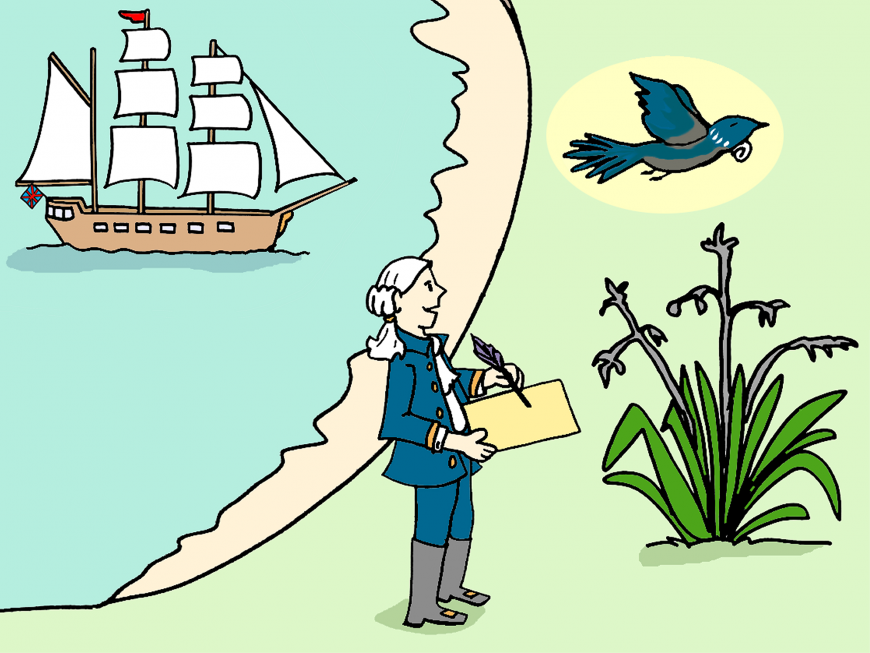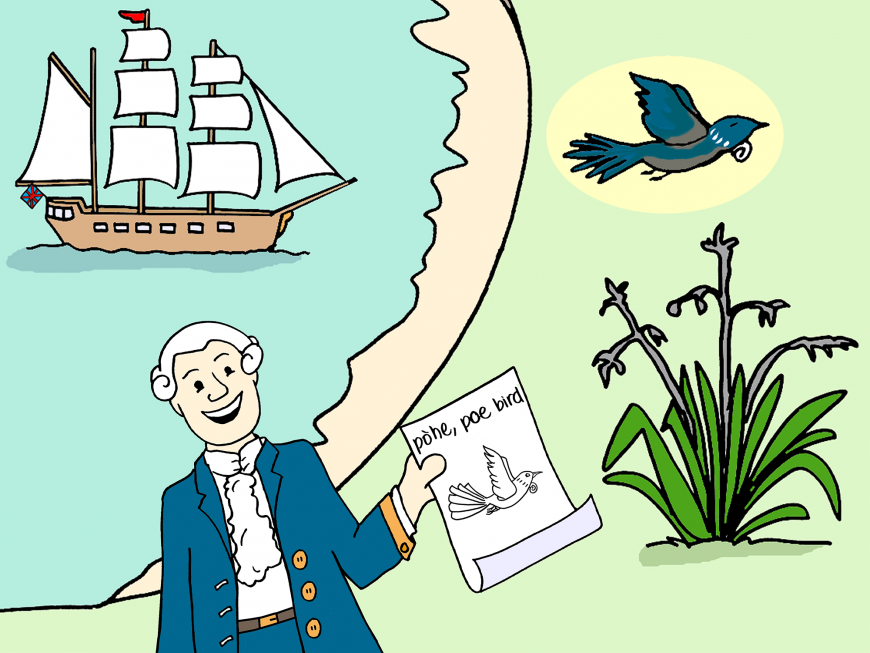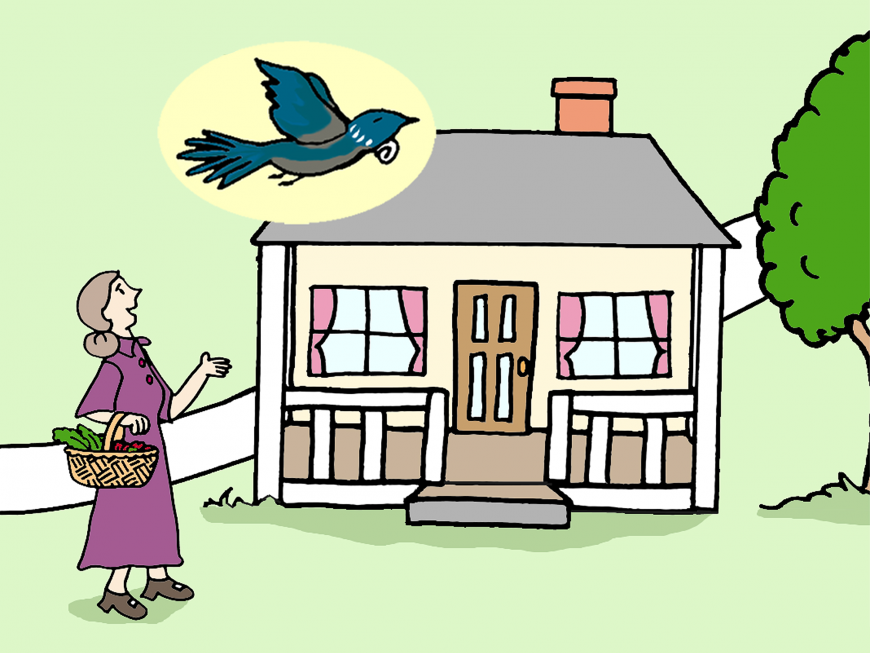Ngā ingoa koroniara
In this section
Te tuarua ō ngā hokinga mai ō Kāpene Kuki 1772 – tui

Early European visitors wanted to know the Māori names for the animals and plants they saw. Reinhold Forster was the naturalist on Captain Cook’s second voyage to New Zealand in 1772. Forster asked the Rangitāne people living in Queen Charlotte Sound what the name of the bird they heard calling was.
He wrote down their reply phonetically as “Rògho Etooee”. In early texts this is recorded as the Māori name of the species. It is now clear that this supposed ‘name’ is the phrase “Rongo e tūī” translated as “You are hearing the tui”.
Te tuarua ō ngā hokinga mai ō Kāpene Kuki 1772 - pōhe or poe rānei

Georg Forster, who was also a naturalist on Cook’s second voyage to New Zealand, drew a picture of the tūī. He labelled it the pòhe or poe bird. This is the first name we know of that the early Europeans used.
We don’t know exactly why it was known as the pòhe bird. Captain Cook suggested that the white throat tufts were called “poies”. Māori wore ear pendants (poe) with tūī as feather ornaments. Reinholt Forster argued, however, that European sailors, not Māori, used this name.
Ngā tau whakamutunga o te rautau tekau mā iwa: parson bird
![As the European colony in New Zealand grew, ministers became more common. The tuft of white feathers at the tūī’s throat reminded settlers of the white collar of a minister or parson. The name parson bird became fashionable for the tūī. In his famous book, The History of the Birds of New Zealand, Walter Buller (1888) described the tūī: “To those familiar with the bird, this name [parson bird] is certainly appropriate; for when indulging in its strain of wild notes it displays these ‘bands’, and gesticulates in a manner forcibly suggestive of the declamatory style of preaching.” As the European colony in New Zealand grew, ministers became more common. The tuft of white feathers at the tūī’s throat reminded settlers of the white collar of a minister or parson. The name parson bird became fashionable for the tūī. In his famous book, The History of the Birds of New Zealand, Walter Buller (1888) described the tūī: “To those familiar with the bird, this name [parson bird] is certainly appropriate; for when indulging in its strain of wild notes it displays these ‘bands’, and gesticulates in a manner forcibly suggestive of the declamatory style of preaching.”](/assets/Education/tui/tui_thumb_colonial-4-parson-bird__ResizedImageWzg3MCw2NTNd.png)
As the European colony in New Zealand grew, ministers became more common. The tuft of white feathers at the tūī’s throat reminded settlers of the white collar of a minister or parson. The name parson bird became fashionable for the tūī.
In his famous book, The History of the Birds of New Zealand, Walter Buller (1888) described the tūī: “To those familiar with the bird, this name [parson bird] is certainly appropriate; for when indulging in its strain of wild notes it displays these ‘bands’, and gesticulates in a manner forcibly suggestive of the declamatory style of preaching.”
Ngā tau tīmatanga o te rautau rua tekau: tui

In the mid-19th century, Europeans, or Pākehā, were calling this bird the tui or parson bird, but by the early 20th century the name parson bird was largely discarded in favour of tui. This early spelling of tui reflects the English convention of the time, where long vowels in Māori were not shown by macrons.
Ngā tau tīmatanga o te rautau rua tekau mā tahi: tūī

The tūī is now one of New Zealanders’ favourite garden birds and its name is changing again. In Māori, macrons indicate that the sound of a vowel is long. When tui is spoken and spelt correctly, both vowels are long and it is written as tūī. Tūī is now sometimes written like this in English too – this helps us pronounce its name.

